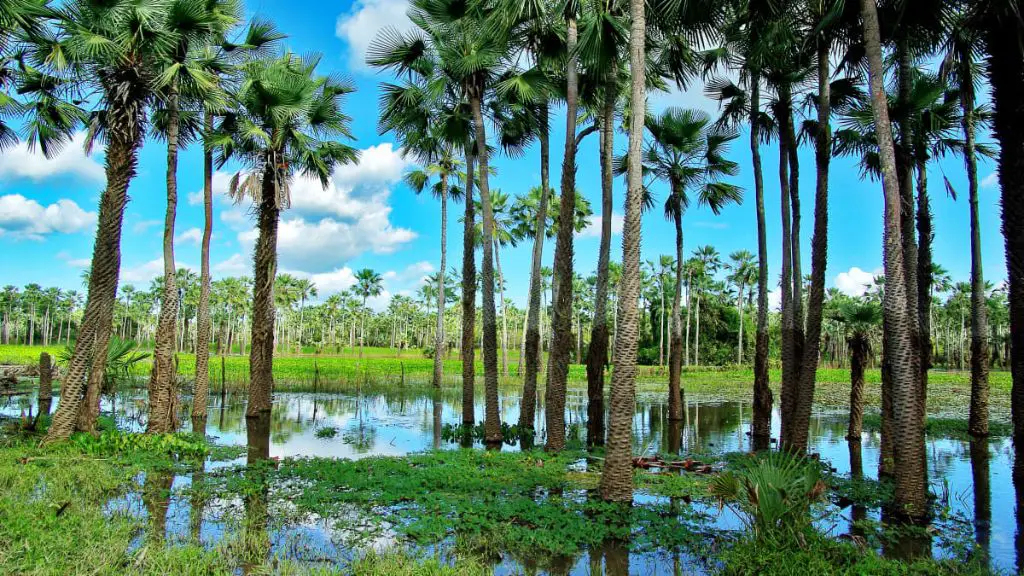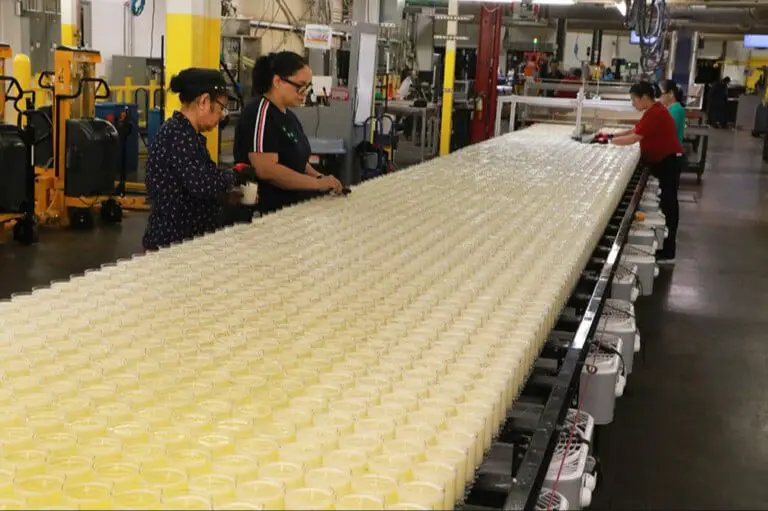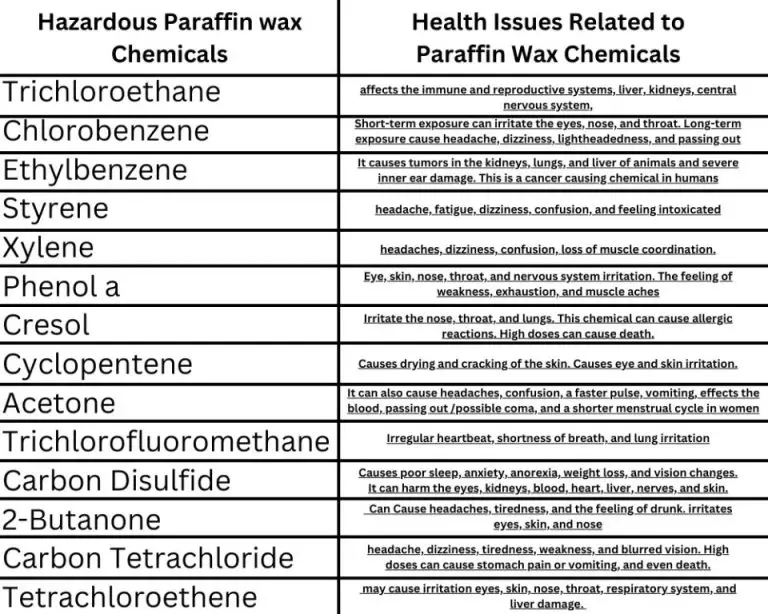Which Country Is The Largest Producer Of Wax In The World?
Wax is an important material that has been used by humans for thousands of years. It is made up of organic compounds that are malleable solids at ambient temperatures. Wax has a wide variety of uses including candles, lubricants, and waterproof coatings. Some common types of wax are paraffin, beeswax, and carnauba wax. Wax is a versatile substance that plays an integral role in many industries.
This article will explore the largest producer of wax in the world. Wax production is concentrated in certain countries due to factors like climate, natural resources, labor costs, and proximity to market demand. Determining the top wax producing country provides insights into the global supply chain and production capacity of this vital material.
What is Wax and What is it Used For?
Wax is a natural substance produced by honey bees, plants, and petroleum that is soft and malleable at room temperature but becomes hard and brittle when cold. It is made up of saturated and unsaturated hydrocarbons along with fatty esters, free acids and alcohols (Ataman Kimya).
Wax has a wide variety of applications and uses. Some of the most common uses of wax include (Ataman Kimya):

- Candles – Wax is a key component of candles and provides the fuel source as the wick burns.
- Cosmetics – Waxes are used in products like lip balms, lotions, creams, and pomades to provide thickness, texture, and moisture barrier properties.
- Polishes – Wax is used in automobile, furniture, and shoe polishes to produce a protective coating that repels water.
- Crayons – Colored wax is the main component of crayons, allowing for coloring and drawing.
- Chewing gum – Some chewing gums use wax to provide chewiness and texture.
- Wax paper – Wax coatings provide moisture barrier and non-stick properties to wax paper.
- Investment casting – Wax models are used to create molds and casts for metal products.
Overall, wax is a versatile material valued for characteristics like its malleability when warm, moisture resistance when cool, and smooth texture.
Major Wax Producing Countries
The top wax producing countries in the world are China, India, and Ethiopia. According to data from Tridge, in 2020 China produced 38.88% of the total global wax production, making it the largest producer in the world. India produced 8.76% of global wax in 2020, ranking it second. Ethiopia produced 5.29% of the global total, ranking third among wax producing countries.
Other major wax producers include Argentina, which accounted for 4.88% of global production in 2020. Turkey produced 4.79% of the world’s wax that year. Mexico, Brazil, Tanzania, Vietnam, and the United States round out the top 10 producing countries, each accounting for 2-4% of total world production in 2020.
Most commercial wax comes from paraffin wax, which is a byproduct of petroleum refining, and beeswax, which is produced by honey bees. Major petroleum producing countries like China, India, and the United States have established paraffin wax industries. Beeswax production is more geographically dispersed, with countries like Ethiopia, Tanzania, Mexico and Argentina as major producers.
According to trade data from the World Bank, other notable wax exporting countries include Japan, South Korea, the Netherlands and Germany, though their domestic production totals are lower than the top producers. Overall, Asia dominates commercial wax production, accounting for over 50% of total world output.
According to China’s commerce ministry, China is the largest producer and exporter of wax globally. In 2021, China produced over 600,000 tons of paraffin wax, representing over 30% of total global production. The country’s wax exports were valued at $1.2 billion in 2021.
China’s Wax Production

China has maintained its position as the top wax producer in the world for over a decade. According to data from the UN Comtrade, China exported over $72.7 million worth of paraffin wax containing less than 0.75% oil between October 2022 and October 2023, a 6.25% increase from $68.4M the previous year.
The main factors contributing to China’s wax industry dominance include:
- Abundant local refining capabilities – China has a well-developed refining industry that provides ready access to key raw materials like slack wax.
- Low labor costs – Wax production is a labor-intensive industry, and China’s low labor costs give it a competitive advantage.
- Large domestic market – China has a massive domestic market for wax products used in candles, crayons, cosmetics etc. This provides economies of scale.
- Government support – The wax industry gets policy support and incentives from the Chinese government.
China now has over 300,000 tons per year capacity for export quality wax production. Major production clusters are located near refining hubs in Shandong and Liaoning provinces. The country’s total estimated wax production capacity exceeds 600,000 tons annually as of 2020.
Other Notable Producers
Brazil and India are also major wax producers globally:
Brazil is the leading producer of carnauba wax, generating around 5,000 tons annually. Carnauba palm tree groves are primarily concentrated in northeastern coastal Brazil. The wax is derived from the leaves of the carnauba palm tree and has applications in polishes, cosmetics, food products, and more. Brazil exports carnauba wax to over 70 countries worldwide.

India produces around 15,000 tons of wax annually, including paraffin, microcrystalline, and vegetable waxes. The leading wax producing states are Maharashtra, Gujarat, and Uttar Pradesh. India exports wax products to the United States, Europe, the Middle East, Africa, and Southeast Asia. The wax industry in India has grown steadily in recent years.
Factors Influencing Wax Production
There are several factors that influence a country’s wax production capabilities and output levels including:
Availability of Raw Materials – Access to beeswax and paraffin wax is essential for commercial wax production. Countries like China have large beekeeping industries to produce beeswax domestically. Other countries rely more on imported waxes.
Manufacturing Capabilities – Wax production requires specialized equipment like wax melt tanks, filtering systems and packaging machinery. Countries with advanced manufacturing sectors are better equipped for large-scale wax production.
Demand Drivers – The biggest demand drivers are the candle and cosmetics industries. Countries with large manufacturing bases in these sectors, like China, require huge wax supplies to meet production needs.
Government Policies – Some governments provide subsidies or preferential policies to support domestic wax producers. This can influence the competitiveness and output levels of the industry.
Technology – The use of modern techniques and automation allows for increased efficiency and higher production volumes. Countries that utilize the latest technologies have an advantage.
Transportation Infrastructure – Having ports, roads and railways to import raw materials and distribute finished wax products enables countries to be leading producers.
Labor Costs – Wax production is relatively labor intensive. Countries with lower labor costs can be more competitive in manufacturing wax products.
Recent Trends
The wax industry has seen some significant changes in production and demand over the past 5-10 years. According to a Kline report, the years 2020-2022 witnessed dramatic shifts in wax supply. Several petroleum wax suppliers exited the market while synthetic wax suppliers expanded capacity. This has led to tight supplies of petroleum waxes.

On the demand side, the pandemic caused a downturn in 2020 but demand rebounded in 2021-2022. The personal care, cosmetics, and candle industries drove wax demand higher over the past couple of years. The hair removal wax market has seen steady growth as disposable incomes have risen and demand for waxing services in salons and spas has increased.
Overall, wax production declined in 2020 during the pandemic but has since rebounded due to recovering demand and tight supplies. Petroleum wax availability has become more constrained while synthetic waxes are helping meet increasing demand from key end-use industries.
Future Outlook
The wax industry is projected to see steady growth in the coming years. According to Grand View Research, the global wax market size is expected to reach $13.7 billion by 2030, expanding at a CAGR of 4.3% from 2023 to 2030.
Wax demand is forecast to be driven by economic development and population growth, particularly in Asia Pacific. New applications for waxes are also emerging, such as in paints, coatings, adhesives, and plastic products. The cosmetics industry is another major demand driver, using waxes in products like lipsticks, mascaras, and creams.
On the supply side, paraffin wax production is expected to grow steadily to meet demand. China will likely remain the top global wax producer, though other countries like Vietnam, Brazil, and India are also increasing capacity. Technological advancements may boost efficiency and yields for wax production.
However, the wax market does face some challenges. Fluctuating raw material prices affect profit margins, while stricter environmental regulations may constrain production. The rise of wax substitutes is another concern for the industry.
Overall, analysts project the wax market to continue moderate expansion. Key trends to watch include increased adoption in emerging economies, new product developments, and industry consolidation.
Major Producers Comparison
Let’s compare the top wax producing countries side-by-side on key statistics:
| Country | Wax Production (tons) | Growth Rate | Major Wax Types |
|---|---|---|---|
| China | 1.2 million | 8% | paraffin, microcrystalline |
| Brazil | 450,000 | 3% | carnauba |
| India | 350,000 | 4% | paraffin, microcrystalline |
| USA | 250,000 | 1% | paraffin, microcrystalline |
As we can see, China is far and away the largest wax producer globally, producing over 1 million tons per year. China focuses mainly on paraffin and microcrystalline wax production. Brazil takes second place, producing 450,000 tons annually, with a focus on carnauba wax. India and the USA trail behind, each producing 350,000 and 250,000 tons per year respectively.
In terms of growth, China and India are expanding wax production the fastest at 8% and 4% annually. Brazil and the USA have slower growth under 5%.
So in summary, China dominates wax production globally thanks to its massive output and rapid growth in paraffin and microcrystalline wax. But other major players like Brazil, India and the USA have strong production in certain wax types.
Conclusion
In summary, China is the world’s largest producer of wax, accounting for over 30% of global production. The country has seen rapid growth in wax production driven by its large domestic market as well as strong export demand. Other major wax producing nations include South Korea, Japan, India, and countries in Europe, but none come close to the scale of China’s wax industry.
Key factors that have contributed to China’s dominance as a wax producer include its large availability of raw materials like hydrocarbon feedstocks, its manufacturing expertise in refining and processing wax, low labor costs, and heavy investments by the government to develop the country’s chemical industry. Moving forward, growth in sectors like cosmetics, rubber, and packaging will continue to fuel China’s wax production. Though other countries are also projected to increase wax output, China is expected to maintain its position as the leading global wax supplier.





